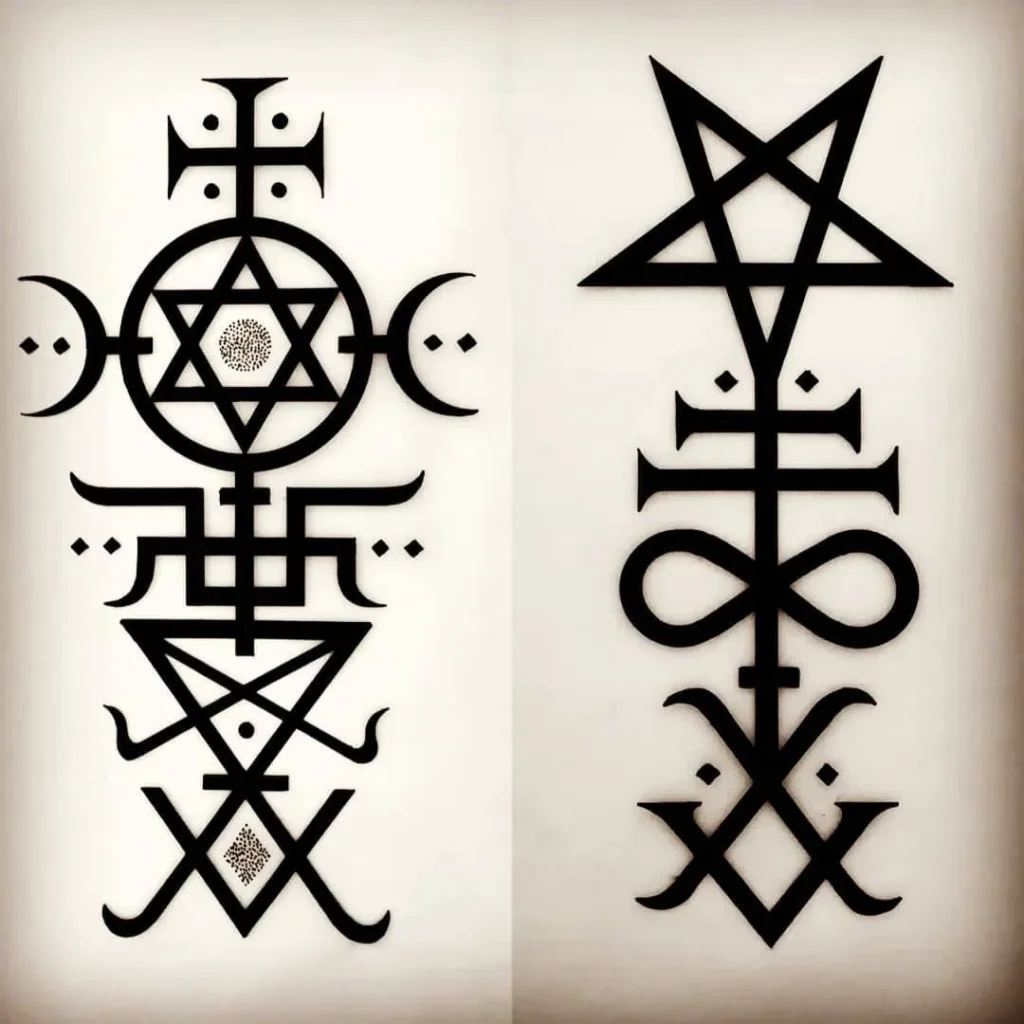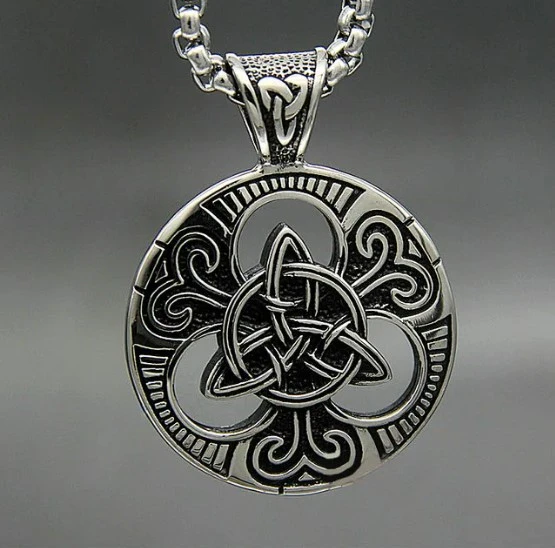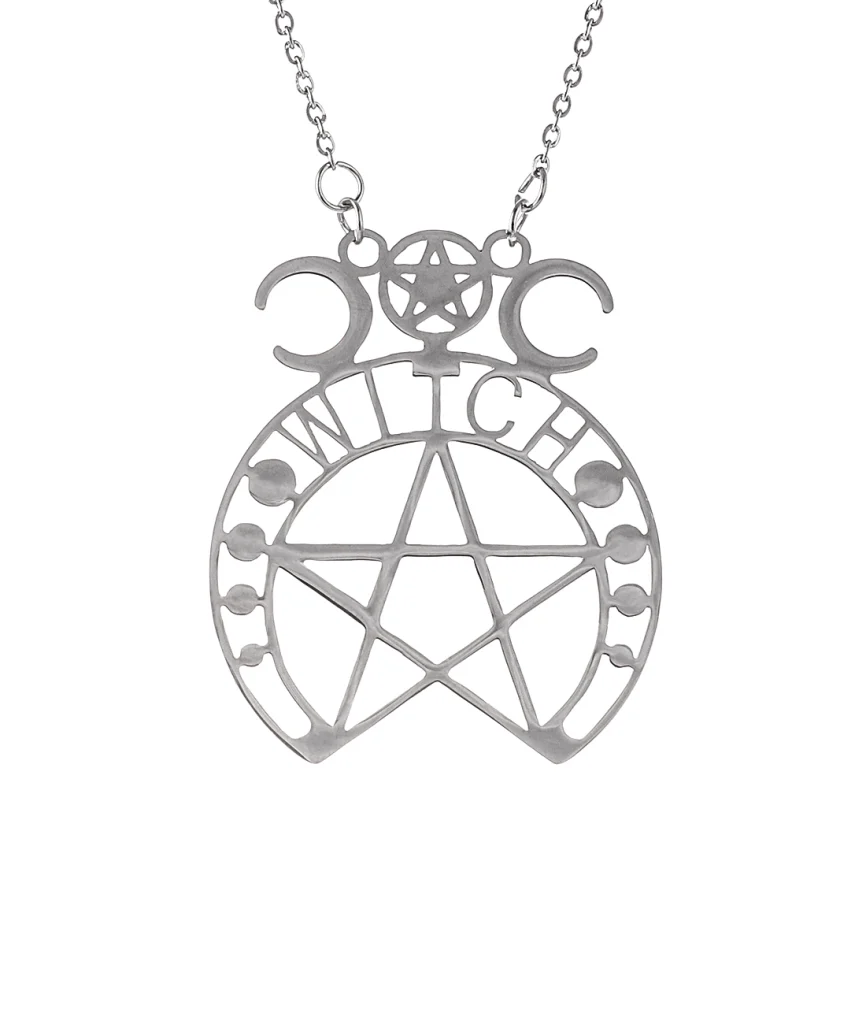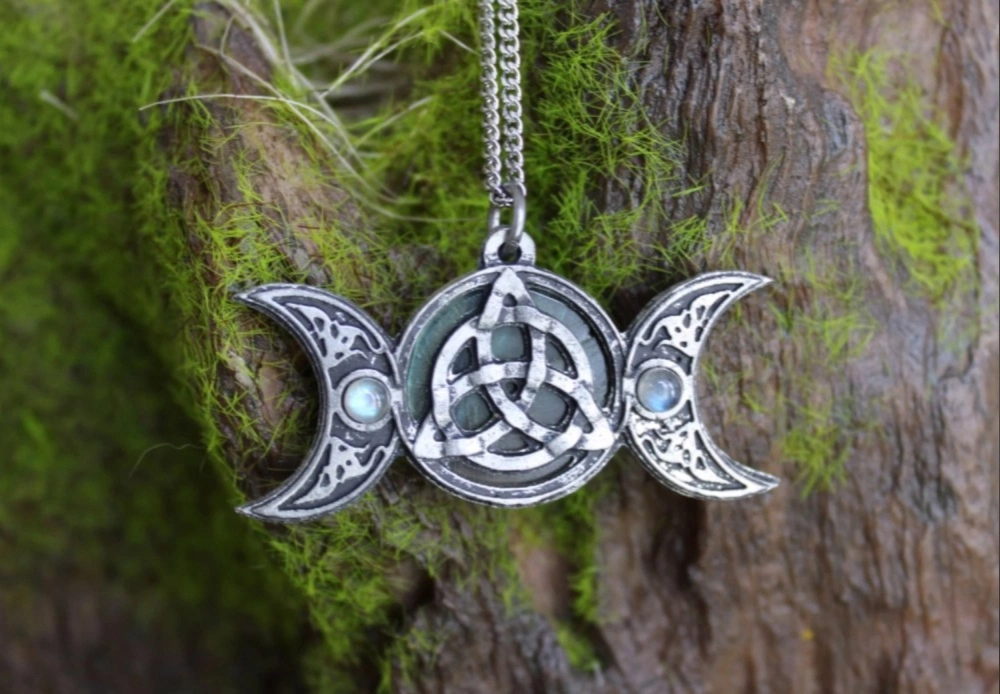Within the realm of witchcraft, The swing symbol holds a profound significance and is often used to tap into the energies of the natural world. This enchanting symbol captures the essence of both playfulness and transformation. In this article, we will explore the symbolism of the swing in witchcraft, its spiritual significance, and how it can be incorporated into magical practices to promote growth, liberation, and the embrace of life’s cycles.
The Symbolism of Swings in Witchcraft
- Transition and Transformation: In witchcraft, swings are seen as witch symbols of transition and transformation. The swinging motion mimics the ebb and flow of energy in the natural world. Witches often use swings in their rituals to signify the shifting of energies and the transformation of consciousness. Swinging higher and higher can symbolize the ascent into higher states of awareness and mystical experiences.
- Divination and Contacting Spirits: Witches have been known to use swings as divinatory tools. By swinging back and forth, they believe they can connect with the spirit world and gain insights into the past, present, or future. Swings serve as a conduit between the earthly realm and the ethereal, allowing witches to communicate with spirits and seek guidance from the otherworldly.
- Symbol of the Witch’s Broom: The connection between swings and broomsticks in witchcraft is evident. While broomsticks are famously associated with witches’ flights, swings are seen as more subtle representations of these mystical journeys. Swinging on a swing is considered a metaphorical flight, a way for witches to tap into their own inner power and engage in astral projection or dreamwork.
- Ritual Tools: Swing symbols are sometimes incorporated into witchcraft rituals as tools of empowerment and connection. Witches may hang swings in sacred spaces, decorating them with herbs, witchcraft crystals, or charms to enhance their magical properties. The swinging motion can intensify the energy in the ritual and help witches focus their intentions or even for prayer against witchcraft.
- Nature and the Elements: Witches often have a deep connection to the natural world, and swings, made from wood and suspended from sturdy branches, symbolize this connection. The creaking of the swing in the wind, the feel of the wood against the skin, and the sensation of being outdoors all contribute to the ritual experience and help witches attune themselves to the elements.


The Significance of The Swing Symbol in Witchcraft
In the context of witchcraft and the occult, the swing symbol is not as commonly recognized or standardized as some other symbols, like the pentagram or the crescent moon. However, the symbolic significance of the swing in witchcraft can still be explored in a more esoteric or personal context. Keep in mind that these interpretations may vary among practitioners and covens:
- Transition and Transformation: In witchcraft, the swing symbol can symbolize transitions and transformation, similar to its broader symbolic meaning. It can represent the shifting of energies, the movement between different states of consciousness, or the transition from one phase of life or ritual to another.
- Ritual Tool: Some witches may incorporate swing symbols into their rituals or magical practices as tools for enhancing intention and energy. Swinging back and forth on a swing can be seen as a way to raise and direct energy, particularly when engaging in spells or love rituals related to personal growth, change, or empowerment.
- Connection to Nature: Witches often have a deep connection to nature, and swing symbols are made from natural materials like wood and suspended from trees can symbolize this connection. Swinging in a natural setting can be used as a means of grounding, attuning to the elements, and connecting with the spiritual energies of the earth.
- Psychic Exploration: The swinging motion can also be utilized in certain forms of divination and psychic exploration. Some witches may use swings as a means to induce altered states of consciousness, aiding in astral projection, dreamwork, or spirit communication.
- Metaphorical Flight: In some witchcraft traditions, swinging on a swing symbol may be seen as a metaphorical flight, akin to the traditional concept of witches flying on broomsticks. This symbolism can be incorporated into rituals or meditative practices that involve exploring other realms or tapping into one’s inner power.
It’s essential to recognize that the swing symbol in witchcraft can be highly personal and may vary widely among practitioners. In many cases, the symbolic significance of an object or ritual tool in witchcraft is deeply influenced by an individual’s specific beliefs, traditions, and intentions within their own practice.
Incorporating the Swing Symbol into Witchcraft Practice
Incorporating the swing symbol into witchcraft practice can add a unique and powerful dimension to your rituals, spells, and spiritual work. Here are some ways you can do this:
- Ritual Space Setup: Begin by setting up your ritual space. If you have access to an outdoor area with a swing, that’s ideal, but an indoor swing can also work. Place the swing in a prominent position within your sacred space.
- Cleansing and Blessing: Just as you would cleanse and consecrate other ritual tools, do the same for your swing. Use smudging herbs like sage or incense to purify the swing, and then bless it with your intention. You can speak words of power or use ritual gestures to imbue the swing with your magical intent.
- Dedication Ritual: Perform a dedication ritual for the swing to make it an integral part of your magical practice. Share your intentions and desires with the swing, asking it to be a conduit for your magic and a symbol of transformation and empowerment.
- Meditative and Trance Work: Use the swinging motion for meditative and trance work. Start by gently swinging and focus on your breath. As you swing back and forth, visualize your consciousness expanding and connecting with higher realms. This can be a powerful way to access altered states of consciousness for divination or spiritual exploration.
- Casting Spells: Incorporate the swing symbol into your spellcasting. Swing gently while reciting spells or incantations to infuse your words with the energy of motion and transformation. The swinging motion can help release the magical energy into the universe.
- Ritual for Transformation: Create a specific ritual for transformation or personal growth using the swing symbol. As you swing higher and higher, visualize the changes you want to manifest in your life. When you reach the peak, release your intention into the universe, trusting that it will be realized.
- Divination Tool: Use the swing for divination purposes. Swing symbol while focusing on a specific question or issue, and interpret the swinging motion as a form of divination. For example, a clockwise swing could be seen as a positive response, while a counterclockwise swing could indicate a negative answer.
- Spirit Communication: If you are comfortable with spirit work, you can use the swing as a means to communicate with spirits or ancestors. Swing gently and invite the presence of the spirit you wish to contact. Pay attention to any subtle changes in the swinging motion or any intuitive messages that come through.
- Seasonal Rituals: Incorporate the swing into seasonal rituals. For example, during the spring equinox, use the swing as a symbol of balance and harmony, swinging back and forth to celebrate the equal length of day and night.
- Shadow Work: The swinging motion can also be used for shadow work, which involves exploring and integrating the darker aspects of yourself. As you swing, contemplate your shadows and allow them to come to the surface for healing and transformation.
Remember that the effectiveness of incorporating the swing symbol into your witchcraft practice depends on your personal connection and intention. The swing can be a versatile and potent tool for enhancing your magical and spiritual work, adding a dynamic dimension to your magic rituals and helping you harness the power of transformation and liberation including New Moon Rituals.


How to Use the Swing Symbol in Shamanic Journeying and Astral Projection
The swing symbol can be a unique and potent tool for shamanic journeying or astral projection, enhancing your ability to access altered states of consciousness and explore spiritual realms. Here’s how you can use the swing symbol in these practices:
- Prepare Your Space:
- Find a quiet and comfortable space where you can hang a swing or use an existing one.
- Ensure the area is free from distractions and interruptions.
- Light candles or incense to create a conducive atmosphere for your journey.
- Cleanse and Consecrate the Swing:
- Perform a cleansing ritual on the swing to purify it both physically and energetically.
- Consecrate the swing with your intention, asking it to serve as a vehicle for your spiritual exploration.
- Center and Ground:
- Before starting, take a few moments to center yourself and ground your energy. Focus on your breath and release any tension or distractions.
- Enter a Trance State:
- Begin swinging gently, allowing the rhythmic motion to lull you into a trance-like state.
- Concentrate on the swinging sensation, feeling yourself moving back and forth.
- Visualize Your Destination:
- As you swing, visualize the destination or realm you wish to visit during your shamanic journey or astral projection.
- Imagine yourself leaving your physical body and traveling to this realm.
- Set Your Intention:
- Clearly state your intention for the journey. What do you seek to learn or experience? Who do you wish to connect with?
- Affirm your intention as you swing, allowing it to guide your journey.
- Astral Projection:
- If your goal is astral projection, focus on the sensation of leaving your physical body while swinging. Visualize your astral form detaching and rising above you.
- Feel the freedom of movement in your astral body as you explore the astral plane.
- Shamanic Journeying:
- During shamanic journeying, allow the swinging motion to serve as your “vehicle” for traveling between the realms.
- Pay attention to any images, sensations, or messages that arise as you swing. These may provide insights or guidance.
- Interact with the Spirit World:
- Once you feel connected to the spiritual realm, engage with any spirits, guides, or entities you encounter.
- Ask questions, seek wisdom, or request healing and guidance.
- Return and Ground:
- When your journey or astral projection is complete, gently slow down the swinging motion.
- Gradually bring your awareness back to your physical body and the present moment.
- Take time to journal your experiences and insights.
- Offer Gratitude:
- Express gratitude to the swing for its assistance in your journey or astral projection.
- Perform a closing ritual to release any residual energy or connections.
- Integration:
- Reflect on the experiences you had during your journey or astral projection.
- Consider how the insights gained can be integrated into your daily life and spiritual practice.
It’s important to approach shamanic journeying and astral projection with respect and reverence, and always prioritize your safety and well-being. The swing can be a powerful symbol to enhance these practices, providing a unique and dynamic way to explore the realms beyond the physical.
The Swing Symbol in Wicca
In Wicca, the swing symbol is not a traditional or widely recognized symbol in the same way that symbols like the pentagram, the moon, or the elemental representations are. However, Wicca is a highly individualistic and eclectic spiritual practice, and practitioners often incorporate symbols and tools that hold personal meaning and significance. Therefore, while the swing symbol may not be a common element in traditional Wiccan practices, it can still have a place in an individual’s unique and personal practice. Here’s how it could be used in a Wiccan context:
- Symbol of Transformation: In Wicca, transformation and personal growth are central themes. A swing’s back-and-forth motion can symbolize the cycles of change and transformation that are fundamental to the Wiccan understanding of life and spirituality. Swinging can serve as a reminder of the continuous journey of self-discovery and evolution.
- Connection to Nature: Wicca places a strong emphasis on nature and the cycles of the natural world. Swing symbols, often situated outdoors, can represent a connection to the earth and the elements. Swinging in a natural setting can be a way for Wiccans to attune themselves to the energies of the earth and the elements.
- Balance and Harmony: Many Wiccans seek to maintain balance and harmony in their lives and practice. The swinging motion of a swing can symbolize the delicate balance between opposing forces and the importance of finding equilibrium in one’s spiritual and mundane life.
- Personal Empowerment: Swings can be seen as symbols of personal empowerment and freedom. In Wicca, the individual’s connection with their own inner power and spiritual path is paramount. Swinging can evoke feelings of liberation and independence, reminding Wiccans of their ability to shape their own destiny.
- Sacred Space and Ritual Tool: Wiccans often create sacred spaces for ritual and magical work. A swing can be incorporated into these spaces, either as a place for meditation, trance work, or as a tool for raising and directing energy during rituals, or even for Humiliation Rituals.
- Psychic Exploration: Some Wiccans engage in psychic and intuitive practices as part of their spiritual journey. Swinging can serve as a means of entering altered states of consciousness for divination, dreamwork, or spirit communication.
It’s important to note that Wicca is a diverse and flexible spiritual practice, and symbolism can vary widely among practitioners. The use of a swing symbol in Wicca would largely depend on the individual’s personal beliefs, experiences, and how they choose to integrate it into their unique practice. Ultimately, what matters most in Wicca is the personal connection and meaning that symbols and tools hold for the practitioner.


Read More: How to Know if You’re a Victim of Witchcraft
Books Exploring the Swing Symbol
The swing symbol in witchcraft is not a widely recognized or extensively documented symbol in the same way that some other symbols are. However, you may find information and interpretations related to the swing symbol in broader texts about witchcraft, magic, and symbolism. These witchcraft books explore various symbols and their significance in magical and esoteric practices, and they might touch upon the swing symbol in that context:
- “The Witch’s Book of Shadows” by Phyllis Curott:
- Phyllis Curott, a prominent Wiccan priestess and author, delves into various aspects of witchcraft, including symbolism and rituals or Self Humiliation Rituals. While not specifically focused on the swing symbol, her books often touch upon the use of symbolism in magical practice.
- “The Witch’s Book of Shadows: The Craft, Lore & Magick of the Witch’s Grimoire” by Phyllis Curott:
- In this book, Curott explores the concept of the Book of Shadows in witchcraft, which often contains symbols, rituals, and magical practices. It may offer insights into how symbols like the swing might be used within the context of witchcraft.
- “The Witch’s Book of Shadows: The Phyllis Curott Collection” by Phyllis Curott:
- This collection combines Curott’s previous works, providing a comprehensive look at her teachings and insights into witchcraft. It may contain references to the use of symbols and objects in magical practice.
- “The Witch’s Shield: Protection Magick and Psychic Self-Defense” by Christopher Penczak:
- While not specifically focused on the swing symbol, this book explores protection magick and psychic self-defense, which can include discussions of symbolism and the use of objects in witchcraft practices.
- “The Modern Witchcraft Spell Book: Your Complete Guide to Crafting and Casting Spells” by Skye Alexander:
- Skye Alexander’s book covers various aspects of modern witchcraft, including spellwork and symbolism. While it may not directly address the swing symbol, it could provide insights into the use of symbols and objects in spells and rituals.
- “The Complete Book of Witchcraft” by Raymond Buckland:
- Raymond Buckland’s comprehensive guide to witchcraft covers a wide range of topics related to Wicca and witchcraft. While it may not specifically discuss the swing symbol, it provides foundational knowledge of magical symbolism and practices.
Remember that the swing symbol in witchcraft is not a traditional or widely recognized symbol but rather a concept that can be interpreted and integrated into individual magical practices. When exploring these books, look for sections on symbolism, ritual tools, or personalizing your practice, as they may contain information on how to incorporate unique symbols into your witchcraft practice.
Conclusion
The swing symbol in witchcraft serves as a doorway to mystical realms, a tool for transformation, and a means of connecting with the spirit world. It underscores the idea that the ordinary can become extraordinary through intention and ritual. Like many symbols in witchcraft, the swing reminds us of the profound connection between the material and the spiritual, inviting us to explore the mystical and enchanting aspects of the world around us. So, the next time you encounter a swing, consider the hidden depths of meaning it may hold in the realm of witchcraft and magic.


Pingback: The Swing Symbol in Witchcraft: Embracing the R...